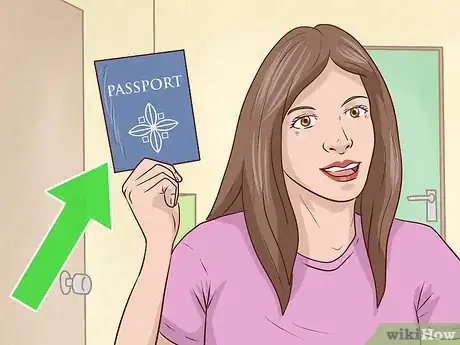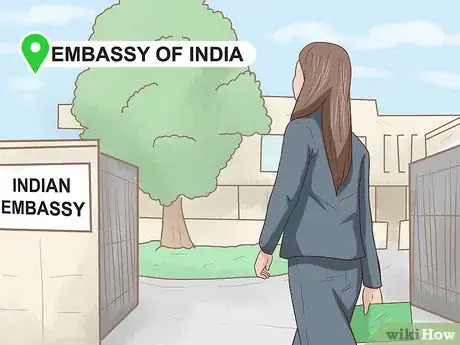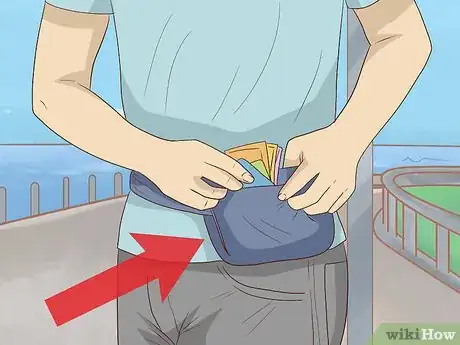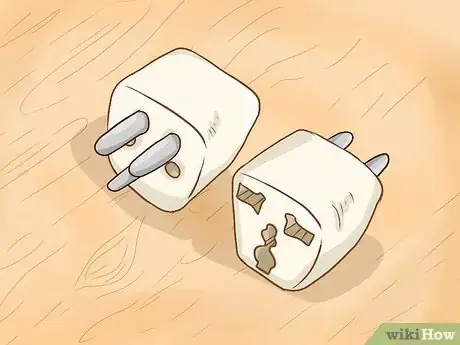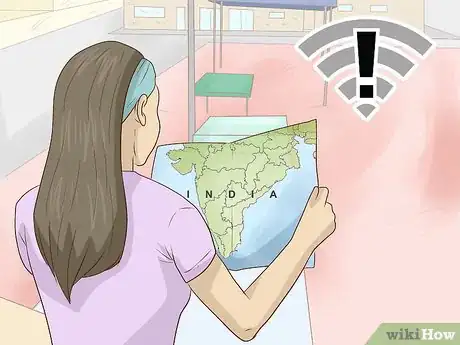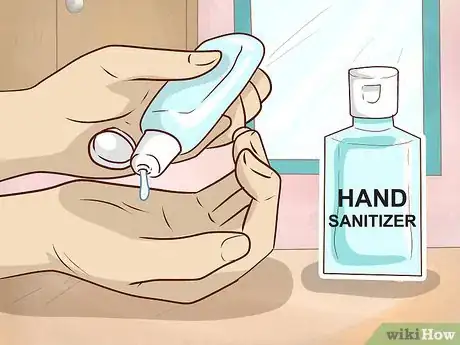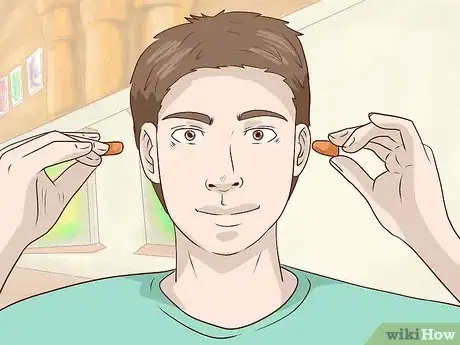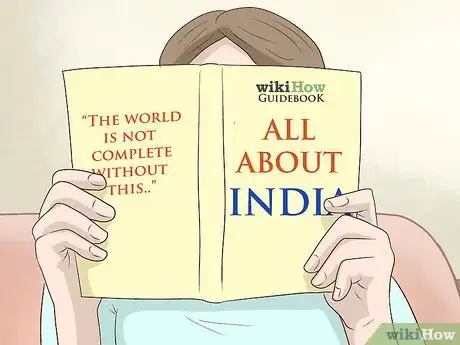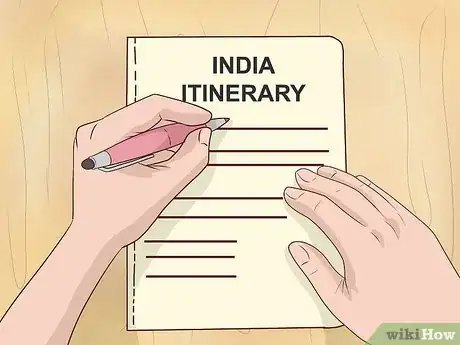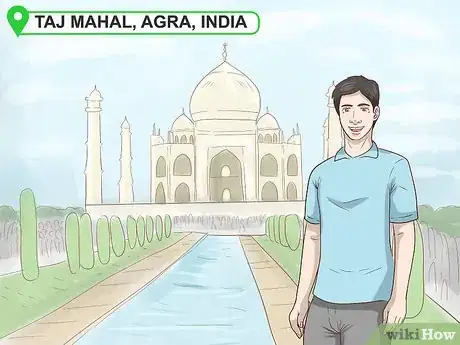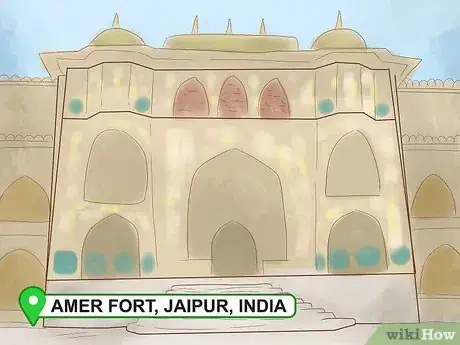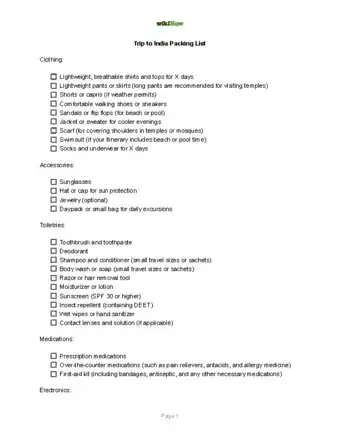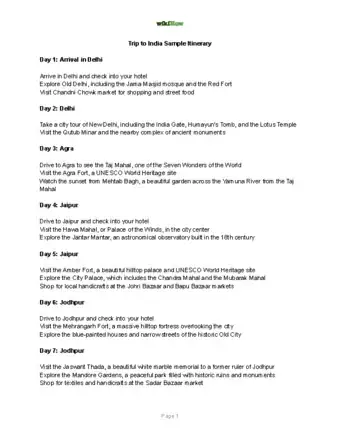This article was co-authored by wikiHow Staff. Our trained team of editors and researchers validate articles for accuracy and comprehensiveness. wikiHow's Content Management Team carefully monitors the work from our editorial staff to ensure that each article is backed by trusted research and meets our high quality standards.
There are 9 references cited in this article, which can be found at the bottom of the page.
This article has been viewed 49,784 times.
Learn more...
India is one of the world's largest, most populated, and most culturally diverse countries, and one that attracts huge numbers of visitors each year. Preparing for a trip to India involves carefully planning your itinerary, making sure you have the necessary travel documents, and obtaining vital immunizations in order to protect your health during your India trip. In addition, you'll need to know what to pack, what form of currency to bring, and what precautions you can take in order to travel safely.
Steps
Getting Your Documents in Order
-
1Obtain a passport in order to legally enter India. Regardless of where you're coming from, you'll need a passport to travel abroad (except for Nepali nationals going to India). Americans can apply for a passport at their local post office or through the website of the State Department. You'll need to show a birth certificate, driver's license (or other legal ID), submit a passport photograph, and fill out various paperwork forms.[1]
- If you're applying for a passport from the U.S., start your application online at: https://www.usps.com/international/passports.htm.
- Your passport needs to be valid for at least 6 months after you apply for a travel visa in order for the visa application to be accepted.
-
2Apply for a visa before entering India. If you're staying in India for less than 60 days, you can apply online for a tourism e-visa. You can apply as little as 4 days before arriving in India. Apply for an Indian tourist visa at the Indian embassy in your nation's capital or at any of the consulates in your nation.[2]
- Contact the Indian embassy in your country to apply for a tourist visa. You may be asked to supply a list of regions you'll be visiting, as well as addresses where you'll be staying.
Advertisement -
3Visit your doctor for vaccinations 4-6 weeks before traveling. Your doctor will be able to provide the necessary immunizations and other travel-related medical treatments. The vaccination requirements for the different regions of India may vary from time to time, so you should always find out which immunizations you need before you travel. Regardless of where you're traveling in India, you'll usually receive tetanus, typhoid, and cholera immunizations.[3]
- Unless your doctor advises otherwise, allow up to 6 weeks for any vaccinations to take effect.
- Other medical issues to be prepared for are malaria and diarrhea. Ask your doctor how you can avoid these conditions.
- Do not travel abroad without international health insurance. An accident in a foreign country can turn out extremely costly, e. g. if repatriation is required.
-
4Book your local train tickets several months in advance. Trains are a popular means of local transportation, and you'll find yourself taking the train if you spend any substantial amount of time in India. Booking train tickets from abroad has become easier in recent times.
- Most trains in India are reasonably priced; when making a reservation the best choice is 2AC followed by 3AC (both sleeper options), while First Class AC is about as costly as a flight, and rather unpleasant due to the excessive cold provided by the air-conditioning.
Packing for Your Trip
-
1Pack light, loose-fitting clothing for the Indian climate. Especially if you're traveling to India in the spring, summer, or fall, you'll want to wear clothing that wicks moisture away from your body. So, bring airy, light shirts made of cotton and light cotton pants as well. It can get chilly during the night (or if you're visiting in winter), so do bring a couple of light jackets and a light sweater. India's dress standards are conservative, so men and women should plan to keep their skin covered.
- Women who dress in typical Western clothing (e.g., shorts and tank tops) may stand out and receive unwanted attention.
- If you prefer to dress according to local customs and avoid unwanted attention, try wearing something Indian women wear. For example, try wearing salwar kameez, a loose-fitting dress with pants.
-
2Bring cash along with your credit cards. It is good to have cash in Dollars or Euro with you, in case you do not find a working ATM. You need Indian Rupees for transactions in markets, for restaurants and for transportation and so on, as credit cards are not accepted everywhere. As a general rule of thumb, you'll need 30-50 USD every day, depending on the class of accommodation that you prefer. A typical four star hotel in a major city costs around USD 60. Make a note to get a small amount of Rupees as soon as you land in India, and later get larger amounts from ATMs. This way you avoid the low exchange rate that is usually given at airports. There is also a possibility to be cheated at an airport, as travelers arrive tired and are distracted by the unfamiliar impressions there.
- Travelers' checks are not accepted any more, but international credit cards are accepted at higher class establishments.
- You can bring up to 25.000 Indian Rupees into India.
- Be sure to inform your bank that you travel to India, in order to avoid the risk of your credit card getting blocked, when they see transactions from that part of the world.
-
3Pack a money belt that you wear under your clothes to keep your money secure on your trip. You can tuck cash in larger bills and credit cards in the pouches of a money belt to keep them safe from pickpockets. You can tuck your passport with your visa into the money belt as well. While there are various styles of money belt, most are worn around your waist or neck and stay concealed under your shirt.[4]
- You can purchase money belts through major online retailers or at most department stores.
-
4Take an adapter plug so you can plug in your electronics. Indian outlets do not have the same plug configuration as most Western outlets. If you find yourself without an adapter in India, you'll be unable to plug in your electronics. Be sure that the adapter you buy is specific to India. Adapters are not interchangeable between different countries with different outlet structures.[5]
- You can find Indian adapters through online retailers or at electronics stores.
-
5Make sure you have a good, current map of the country. Even if you're traveling with a smartphone, a good map will be invaluable if you're moving through a region without cell service. A map can help you navigate unfamiliar roads and will let you get back on your intended route if you become temporarily lost.
- Maps commonly available in India are of low quality; get it at home if possible.
- If you know the specific region(s) you'll be traveling through, find a good map of that region. More specific maps will show greater detail, which is often helpful.
-
6Bring sun protection so you don't get a sunburn. India is a hot, sunny country, and you'll frequently be at risk for sunburn. So, toss a bottle or spray can of high-SPF sunscreen into your bag. Plan to coat your exposed limbs, torso, and face with sunscreen whenever you'll be outside for longer than 15 minutes. If you plan to walk around outside on most days, bring a wide-brimmed sun hat to cover your face.
- Sunscreens below 30 SPF may not be effective if you'll be in the sun for most of the day.
- It also wouldn't hurt to pack a bug-repellent spray to keep flies or gnats from bothering you.
-
7Stuff plenty of hand sanitizer in your travel bags. Some types of food, e.g. types of Indian breads (Chappati or Puri) or South Indian dishes like Dosa are eaten by hand so carrying hand sanitizer will allow you to clean your hands before a meal. It'll also help you avoid illnesses. [6]
- You can find small containers of alcohol-based hand sanitizer in most grocery stores or pharmacies.
-
8Bring a couple pairs of ear plugs. Indian cities are loud, even at night, and can be difficult to sleep in without ear plugs to dampen the noise. Put in the earplugs before going to sleep at night to avoid being woken up in the early morning by cars, music, or people outside your door. You can find ear plugs in most supermarkets. They often come in packs of 20, so you don't have to worry about losing 1 or 2 at night.[7]
- An eye-covering sleep mask would also be a useful item to pack if you're concerned about not sleeping well while you travel.
Choosing Sites and Destinations to Visit
-
1Learn about Indian cultural destinations before you travel. India is filled with important cultural regions and destinations, and it would benefit you to research some of these before arriving in India. A guidebook can be an invaluable resource and helps guide you from point to point within a region of India. For example, check out the popular Lonely Planet India Guide, or any other handbooks put out by reputable publishers.[8]
- For more information regarding culture and tourism, visit the Incredible India website online at: https://www.incredibleindia.org/content/incredibleindia/en.html.
-
2Plan a flexible itinerary for your trip. India is a large country, and most people spend a few weeks traveling in order to enjoy its beauty and varied cultures. However, India's infrastructure isn't of the best quality in all regions, so you should be willing to make alterations to the itinerary as the trip progresses.
- For example, if you were planning to travel from Mumbai to Surat along the west coast of India, but find that a road is out between the cities, revise your itinerary and visit the inland city of Nashik.
- If you're traveling with an organized group, you can skip this step as the travel organization will take care of everything.
-
3Pay a visit to the famous Taj Mahal in Agra. The Taj Mahal, one of the 7 wonders of the world, is an extremely popular tourist location. It's located in the northern part of India, relatively close to major cities like Delhi. The beautiful, symmetrical building and its adjacent grounds are among the most popular tourist destinations in India.[9]
- Keep in mind that, due to its popularity, the Taj Mahal is likely to be extremely crowded when you visit. (You can visit it any day, except on Fridays.)
-
4Visit a number of popular forts and monuments in Jaipur. Jaipur is a popular tourist destination in the northwestern region of India. If you visit, take 2 or 3 days to make your way through the city and take in some of its beautiful architecture, including the Amber Fort and the City Palace.[10]
- The city of Jaipur is also often referred to as the “pink city,” since the majority of its buildings are pink.
-
5Visit Uttarakhand to get away from the city bustle. It is in the foothills of the Himalayas and is a beautiful and pristine region. with many tranquil natural views.[11]
- Years ago Kashmir was a preferred tourist destination that has become less attractive due to terrorist activity there. As it is quite distant from Jaipur and Agra, you should carefully research your options how to get there, if you consider it worthwhile of a vist.
-
6Take a trip to Goa to soak in the sun on a beach. Goa is located on India's southwest coast, and is one of the most popular tourist destinations in the region. Plan to visit the coastal areas surrounding Goa in either the summer or the winter. Foreign tourists tend to visit in the winter, when Southern Indian weather is mild and pleasant (it is quite cold in the North around Delhi, Agra and Jaipur, though).[12]
- If you choose to visit in summer, be aware that this is India's rainy season. You may find that it's too rainy to visit the beach or travel in flood-prone areas. In the months of July and August the best area in India to visit is the state of Tamil Nadu with Chennai/Madras as the capital. Tamil Nadu is exempt from the summer monsoon, yet the heat of summer is reduced by clouds and an occasional shower at night.
Example Packing List and Itinerary
Community Q&A
-
QuestionI am Muslim. What if I need to pray or do Islamic actions?
 Community AnswerThere is no prohibition In India if you do no harm to people with your religious actions, so don't worry and enjoy your visit.
Community AnswerThere is no prohibition In India if you do no harm to people with your religious actions, so don't worry and enjoy your visit. -
QuestionDo I need to bring Indian clothes?
 Community AnswerYou may if you want. I suggest that if you are going to a historic place, dress up in a saree or suit.
Community AnswerYou may if you want. I suggest that if you are going to a historic place, dress up in a saree or suit.
Warnings
- Avoid travelling at night, even in the big cities like Delhi and Mumbai.⧼thumbs_response⧽
- As always when traveling, safety should be your primary concern. Never go anywhere with somebody you don't trust, or allow anybody to take care of your personal belongings. Unfortunately, if you let a stranger watch your possessions, they may be stolen, especially if you look like a tourist or appear to not know your way around.⧼thumbs_response⧽
- Do not get on auto-rickshaws alone. If a trip is urgent, ask the driver's name before embarking, and also note the license plate number. Then, call someone you're traveling with and give them these details. Do so audibly, so that the driver can hear you. This will warn the driver that now authorities will be able to track them down in case anything goes wrong.⧼thumbs_response⧽
References
- ↑ https://travel.state.gov/content/travel/en/international-travel/International-Travel-Country-Information-Pages/India.html
- ↑ https://travel.state.gov/content/travel/en/international-travel/International-Travel-Country-Information-Pages/India.html
- ↑ https://wwwnc.cdc.gov/travel/destinations/traveler/none/india#vaccines
- ↑ https://10yearitch.com/india-travel-advice/must-have-india-travel-gear/
- ↑ https://10yearitch.com/india-travel-advice/must-have-india-travel-gear/
- ↑ https://www.goatsontheroad.com/prepare-travel-india/
- ↑ https://herpackinglist.com/2012/12/ultimate-packing-list-to-india/
- ↑ https://www.telegraph.co.uk/travel/destinations/asia/india/articles/what-to-do-beforeyougotoindia/
- ↑ http://trak.in/tags/business/2010/04/19/top-10-ten-tourist-attractions-destinations-india/
- ↑ http://trak.in/tags/business/2010/04/19/top-10-ten-tourist-attractions-destinations-india/
- ↑ http://trak.in/tags/business/2010/04/19/top-10-ten-tourist-attractions-destinations-india/
- ↑ http://trak.in/tags/business/2010/04/19/top-10-ten-tourist-attractions-destinations-india/
- ↑ http://www.traveller.com.au/india-for-beginners-what-you-need-to-know-33jw2
- ↑ http://www.traveller.com.au/india-for-beginners-what-you-need-to-know-33jw2
